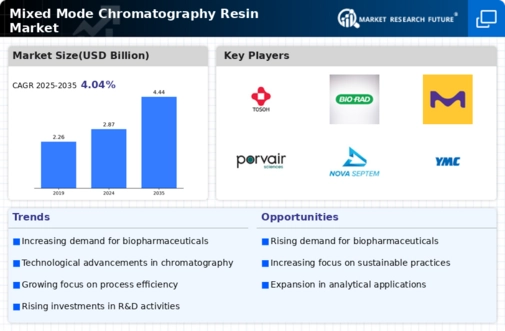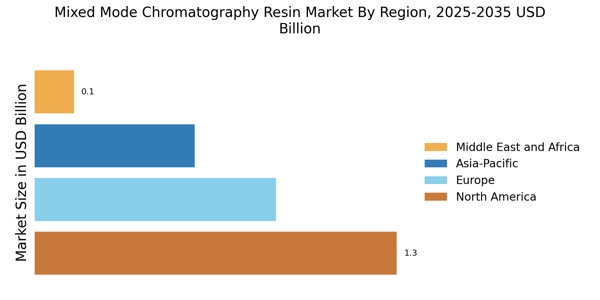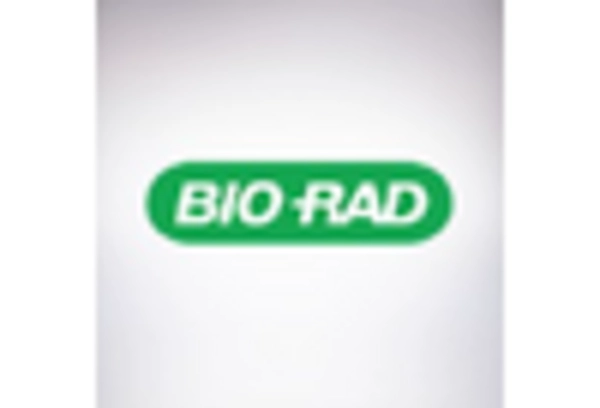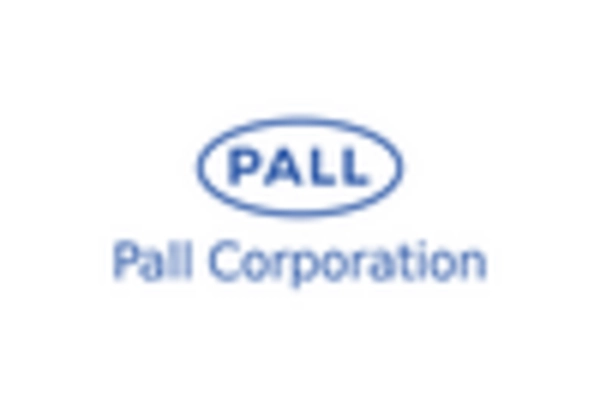Rising Focus on Process Optimization
The increasing emphasis on process optimization in the pharmaceutical and biotechnology sectors is driving the Mixed Mode Chromatography Resin Market. Companies are actively seeking ways to enhance productivity and reduce costs in their purification processes. Mixed mode chromatography resins provide a unique advantage by allowing for the simultaneous interaction of multiple mechanisms, which can lead to higher yields and shorter processing times. This optimization is particularly relevant in large-scale production settings, where efficiency is critical. As organizations strive to streamline their operations, the demand for mixed mode chromatography resins is expected to rise, reflecting a broader trend towards efficiency in the industry. The potential for these resins to improve overall process economics positions them favorably within the Mixed Mode Chromatography Resin Market.
Increasing Biopharmaceutical Production
The rising demand for biopharmaceuticals is a key driver for the Mixed Mode Chromatography Resin Market. As the biopharmaceutical sector continues to expand, the need for efficient purification processes becomes paramount. Mixed mode chromatography resins offer enhanced selectivity and capacity, making them suitable for the purification of complex biomolecules. According to recent estimates, the biopharmaceutical market is projected to reach USD 500 billion by 2026, which indicates a substantial growth trajectory. This surge in production necessitates advanced purification technologies, thereby propelling the demand for mixed mode chromatography resins. The ability of these resins to operate under diverse conditions further enhances their appeal, suggesting a robust future for the Mixed Mode Chromatography Resin Market.
Growing Regulatory Compliance Requirements
The stringent regulatory landscape surrounding biopharmaceutical production is a significant driver for the Mixed Mode Chromatography Resin Market. Regulatory bodies are increasingly enforcing guidelines that necessitate the use of advanced purification technologies to ensure product safety and efficacy. Mixed mode chromatography resins, with their ability to provide high purity levels and robust performance, align well with these regulatory demands. As companies navigate the complexities of compliance, the adoption of these resins is likely to increase. The market for chromatography resins is projected to witness a compound annual growth rate of 7% through 2025, driven in part by the need for compliance with evolving regulations. This trend underscores the importance of mixed mode chromatography resins in meeting the rigorous standards set forth by regulatory authorities.
Technological Innovations in Chromatography
Technological advancements in chromatography techniques are significantly influencing the Mixed Mode Chromatography Resin Market. Innovations such as high-performance liquid chromatography (HPLC) and ultra-high-performance liquid chromatography (UHPLC) have improved the efficiency and resolution of separation processes. These advancements allow for the effective separation of biomolecules, which is crucial in various applications, including pharmaceuticals and diagnostics. The introduction of novel mixed mode resins that combine different interaction mechanisms enhances the versatility of chromatography, catering to a broader range of applications. As the market for chromatography technologies is expected to grow at a CAGR of 6.5% through 2027, the Mixed Mode Chromatography Resin Market is likely to benefit from these developments, positioning itself as a vital component in modern analytical laboratories.
Expansion of Research and Development Activities
The expansion of research and development activities in the life sciences sector is a notable driver for the Mixed Mode Chromatography Resin Market. As research institutions and pharmaceutical companies invest in innovative therapies and drug development, the demand for advanced purification technologies rises. Mixed mode chromatography resins are particularly suited for research applications due to their versatility and ability to handle complex mixtures. The increasing focus on personalized medicine and biologics is further fueling R&D efforts, which in turn drives the need for effective separation solutions. With the life sciences R&D market projected to grow significantly, the Mixed Mode Chromatography Resin Market is poised to benefit from this trend, as researchers seek reliable and efficient purification methods to support their innovative endeavors.


















Leave a Comment